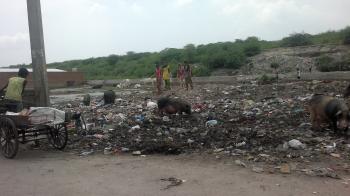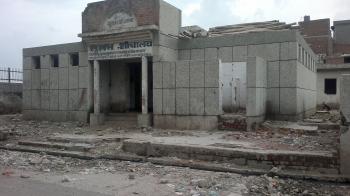The Prime Minister has given a call for ‘Swachh Bharat’ (Clean India) as a mass movement to realise Mahatma Gandhi’s dream of a clean India. To make this campaign a success, it needs to become a bureaucratic priority in addition to a political priority.
Published on: 07/10/2014
This article was recently published in the Indian Express
Prime Minister Narendra Modi deviated from convention and made sanitation a central theme of his Independence Day speech, making it a political priority, and Swachh Bharat Abhiyan, launched today, aims to make the country open defecation-free by 2019. India has become the world’s largest open defecator, and of the 1 billion people worldwide who have no toilets, India accounts for 600 million. Effective sanitation service delivery is critical not only for health outcomes, but also for dignity, livelihoods, safety and security.

But sanitation has not been a key development priority for many years. The general apathy on the part of leaders and the administration, coupled with poor awareness of improved hygiene behaviour, led to low sanitation coverage. Earlier programmes like the Total Sanitation Campaign and Nirmal Bharat Abhiyan, with decentralised, community-led strategies, were reduced to hardware-supply target-driven programmes in many states, resulting in low coverage and usage.
Research by IRC indicates that building toilets alone will not solve India’s sanitation woes. One should view the possibilities of “Clean India” with cautious optimism in the context of critical gaps in the existing national programme and its delivery. First, the programme apparently misses the big picture by not looking at the entire sanitation chain, beyond constructing toilets. States like Kerala with high sanitation coverage, have poor health outcomes due to second generation issues, like the lack of treatment facilities when pits fill up. Second, attention continues to be on hardware-subsidy driven solutions, despite high rates of non-use and millions of non-functional or missing toilets that are financed but simply not there. Third, India’s sanitation programme lacks the professionalism and high-quality management critical to bringing about desired behaviour change.

Still, there are some success stories within India and other developing countries where contextual and adaptive solutions have been designed. For instance, the Nandigram II block (East Medinipur District, West Bengal) in the 1990s achieved the distinction of being the first block in the country to have saturated all rural households with sanitary toilets. The key to success was effective coordination at the district and block levels, the commitment of the Ramakrishna Mission Lok Siksha Parishad and implementation facilitated by good technical assistance. The programme ensured timely flow of funds to match demand, and was monitored by the state sanitation cell. Adopting a community-led strategy, it had strong political support and leveraged social capital to induce behavioural change. There are success stories from Maharashtra, Gujarat, Tamil Nadu, Kerala and Sikkim. All models were community-centric and rolled out in campaign mode under strong and credible local leadership. Globally, successful sanitation programmes share similar qualities, including a sound implementation plan; high-profile political leadership driving a national campaign for collective behaviour change, invoking national pride; a decentralised, community-driven strategy; a clear, accountable institutional home and workable coordination mechanisms; affordable financing options; and outcome-based monitoring.
Possibilities of 'Clean India' will only be realised if we look at the entire sanitation chain.
The key to improving sanitation lies in achieving the needed behavioural change and generating demand for sustainable sanitation services. Social norms around the acceptability of open defecation have to change. “Clean India” should bring the best marketing brains in the country together with effective panchayati raj institution-led networks. To create demand for sanitation and encourage safe hygiene habits, the campaign should utilise both mass media and face to face contact. A key challenge in rolling out the sanitation programme, especially in rural areas, is the acute shortage of professional and managerial support. A national sanitation corps with, say, a hundred professional volunteers in each of the 640 districts for troubleshooting and technical assistance should be created. Religious leaders should be engaged to play a major role to change behaviour.
To make “Clean India” a success, it needs to become a bureaucratic priority in addition to a political priority. My discussions with many district collectors have revealed that sanitation has never been a top priority for them. Rather than promoting a one-size-fits-all sanitation solution, India should encourage innovation and adaptive solutions suited to its diverse conditions. Finally, the current focus on corporate social responsibility partnerships should go beyond funding to look for an infusion of private sector management practices in sanitation, specifically in designing communication strategies to encourage behaviour change. The Centre and states should develop a comprehensive sanitation policy, covering the full sanitation chain with required legal enactments, to make it a rights-based service.
At IRC we have strong opinions and we value honest and frank discussion, so you won't be surprised to hear that not all the opinions on this site represent our official policy.